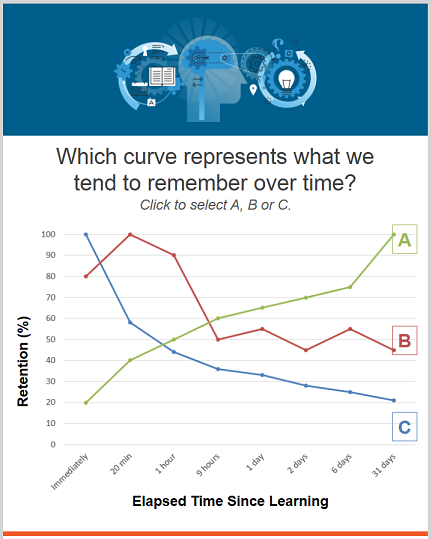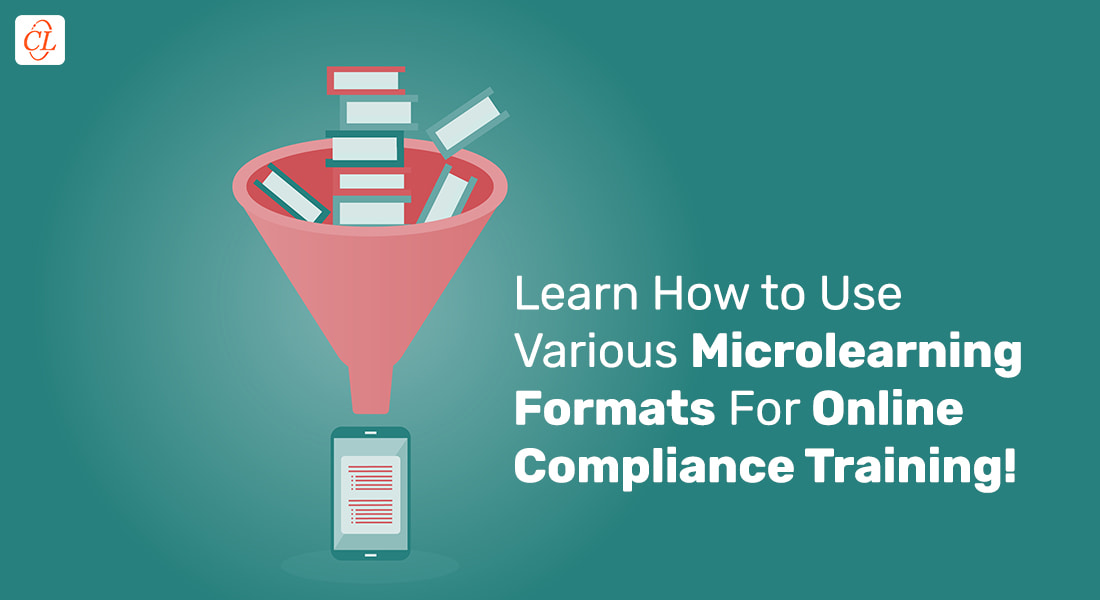7 Microlearning Formats for Online Compliance Training

Everyone’s talking about microlearning in the L&D space, and with good reason. If you’re looking to design a learning experience that’s self-contained, targeted, and covers specific performance-based objectives one at a time, microlearning is indeed the right approach. One microlearning format we’re all familiar with is video. And microlearning videos are popular in corporate training, especially in areas such as compliance training.
7 ways to use microlearning formats in compliance training
- Scenarios to practice decision-making
- Infographics to drive company policies
- Process maps to follow on rules and regulations
- Whiteboard animations to Illustrate real-life examples
- Flash cards to fight the forgetting curve
- Flipbooks for quick reference
- Quizzes for coaching
Haven’t we all gone through compliance training videos on Ethics, Code of Conduct, Cyber Security, or Prevention of Workplace Harassment? There’s no denying that videos are effective as a microlearning format, but is that the only option you have? Your online compliance training doesn’t have to include only videos. Here’s how you can use other microlearning formats to ensure learners are able to access compliance training anywhere, anytime, be it as a supplement for formal compliance training or as reinforcement of training.
Ideas to Use Microlearning Formats in Compliance Training

Here are some ways to leverage seven microlearning formats in your compliance training programs.
1. Scenarios to Practice Decision-Making
Scenarios are widely used in compliance training. But is it possible to deliver scenario-based microlearning modules? Absolutely! Here’s an example to explain this further. Most organizations conduct ethics and code of conduct training that’s mandatory for employees to complete. This could be in the classroom or online, but often it’s noted that the training doesn’t prepare employees to take decisions when they’re faced with similar situations in real-life. So there definitely is a need to help employees practice decision making.

Let’s say you want employees to be able to identify situations that present a conflict of interest. You could design a microlearning module that consists of a couple of scenarios that help learners identify situations where there’s a conflict of interest, and take the right decision. While this is just one example, there are many more instances where employees would need to take decisions based on the code of conduct policies followed at the workplace. So yes, if you intend to help learners make the right decision in different situations, microlearning works!
2. Infographics to Drive Company Policies
Infographics are used not just to enhance visual appeal, but also for effective recall and retention. Your organization might have quite a few employee policies that are covered in the employee handbook. But then, how often do employees refer to the handbook to look up information?
For instance, an infographic on the company policy for dress code at the workplace could be useful for new hires. You could have an infographic based on each of your company policies such as anti-discrimination, grievance handling, use of social media, and termination policy, to name a few.
You could also use infographics as a microlearning module in pre-training before a formal compliance training is rolled out to employees.
3. Process Maps to Follow Rules and Regulations
In highly regulated industries such as Pharmaceuticals and Contract Research Organizations, complying with rules and regulations is an integral part of the workflow. For example, in clinical trials so many regulations need to be complied with, and these regulations differ from one country to another.
Clinical researchers need to be aware of the different phases in clinical trials and the rules and regulations to be followed. Use a process map to explain the regulations and also the steps to be followed in a clinical trial. You could make it interactive by adding popups and hotspots. This is not only effective as a teaching aid, but also as a ready reckoner whenever employees need to refer to the process.
4. Whiteboard Animations for Real-Life Examples
A whiteboard animation is a format that can be used to tell a story based on real-life incidents. Storytelling is an effective strategy that works well for compliance training. But is it possible to include a story in the form of a whiteboard animation in a bite-sized module?
Yes! Use micro stories that can be depicted in the form of a whiteboard animation to draw the attention of learners. For example, if you are teaching learners an Ethics policy, you could use a whiteboard animation that shows a character going through a situation where he/she is in a dilemma about making an ethical choice. Give learners the background of the situation and show how the character arrives at the right decision. This can help learners apply the learning if faced with a similar situation at the workplace.
5. Flash Cards to Flip the Forgetting Curve
During the learning process, it is essential to stimulate your memory to facilitate active recall. Use flash cards as a microlearning format to flip the forgetting curve. Here are some ideas to use flash cards in a compliance training program.
- Display information on a law or a policy and ask learners to guess if the statement is true or false.
- Display an acronym used in the compliance course and ask learners to recall its expanded form.
The learner can reflect on the answer and then flip the card to reveal the answer.
6. Flipbooks for Quick Reference
Flipbooks are used in illustrated books for children, but you’d be surprised to know this is a format that works well for adult learning too. Use the flipbook as a microlearning format to summarize the main points of your compliance training program. This is especially useful when you’re in an industry where there are a lot of compliance laws and regulations to keep track of.
A flipbook can use illustrations and accompanying text to summarize a compliance regulation. You can also provide learners with additional information on a policy, by including links to useful resources.
7. Quizzes for Coaching
A well-crafted quiz as a microlearning format can work as a highly effective learning technique. You can have learners take the quiz to gauge their understanding of the compliance training content or you could use it to coach learners on compliance.

If you aim to coach learners using quizzes and don’t want it to seem like a time-consuming learning activity where learners have to answer questions in sets of 10 or 20, email learners a question per day or 2 questions per week (depending on how you would like to pace the coaching). For instance, a single scenario related to ethics and compliance training can be sent to employees’ email addresses and they can select the correct answer from the list of options provided in the quiz.
You can send a mail with a link that takes learners to the LMS (if you want to track whether learners have attempted the quiz), or you could use SharePoint or an external program such as MailChimp to set up automated emails. So, you have microlearning delivered to the learner’s inbox and this is a good strategy to follow for reinforcement of compliance training.
With all these microlearning formats in compliance training, the opportunity to improve retention and optimize compliance training programs is certainly on the rise. The next time you find that a law or policy has changed, it’s easier to pull out a specific block of microlearning from your training strategy as opposed to sifting through the content in a lengthy training program trying to identify what needs to be updated or removed from the course.
Spend some time thinking about where microlearning can fit in your training strategy (pre-, during, or post-training) and you should be able to leverage it for effective compliance training. If you’d like to know more about incorporating microlearning in your training strategy, go ahead and download our eBook Where Does Microlearning Fit in Your Training Strategy?
Editor’s note: This post was originally published in May 2019 and has been updated for comprehensiveness.





